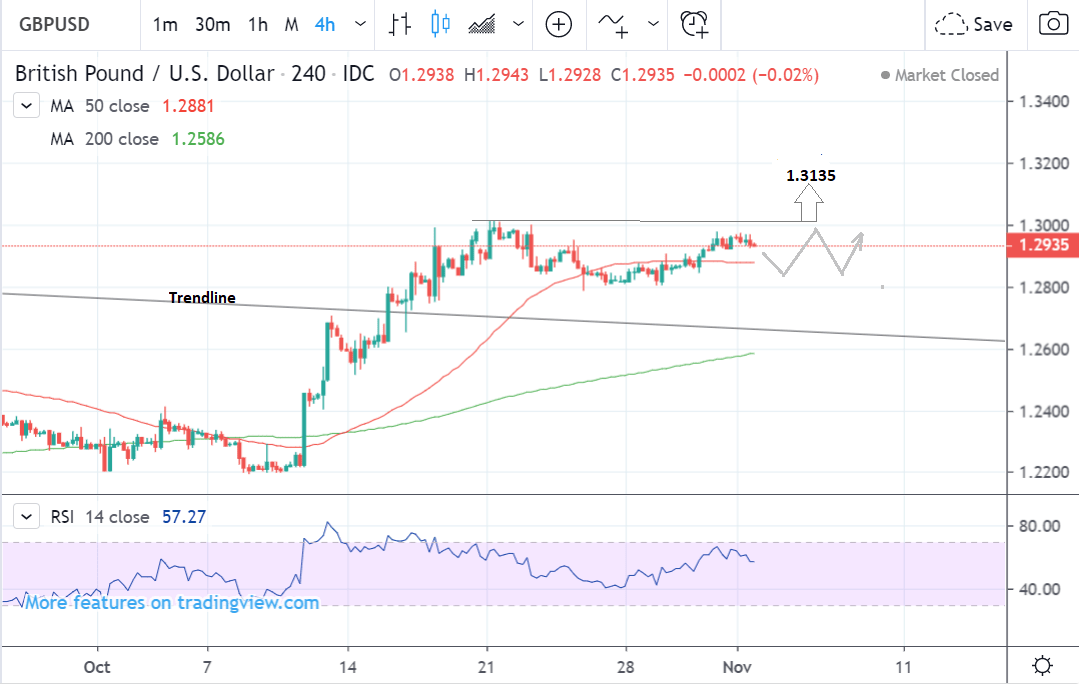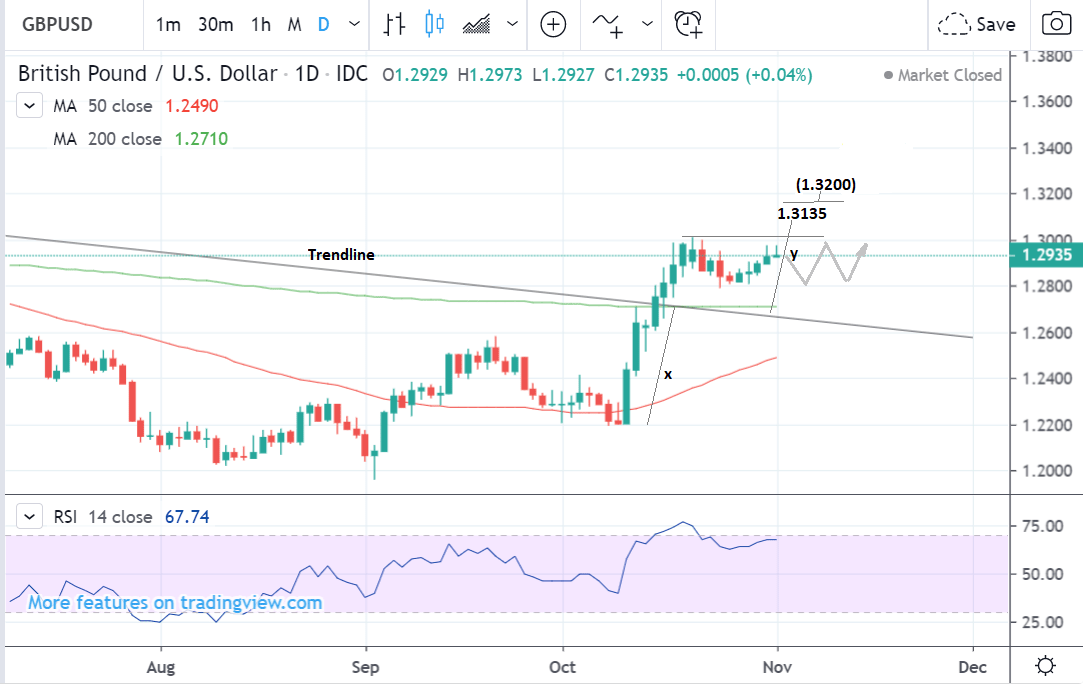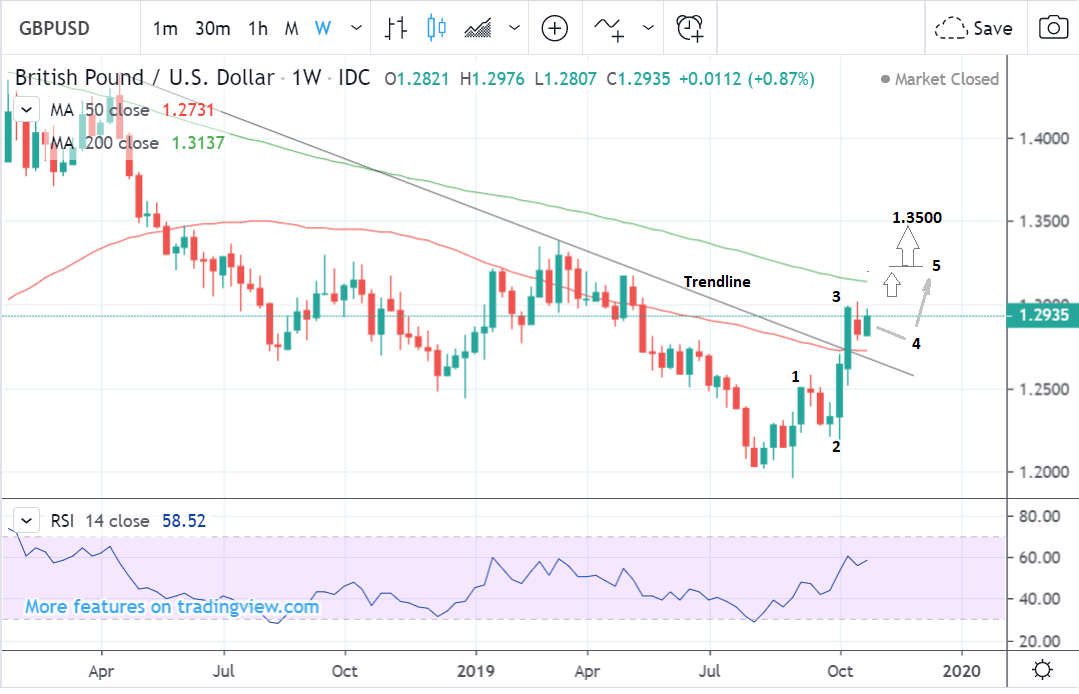Pound-Dollar Week Ahead Forecast: Continuing to Show Bullish Potential
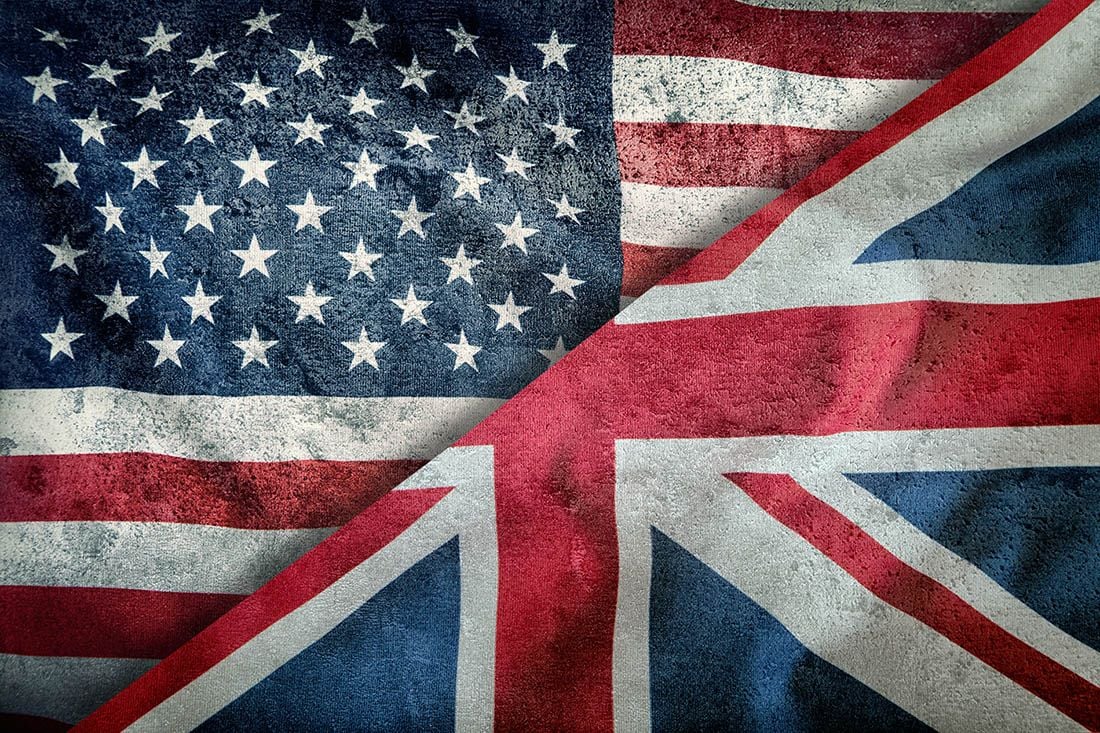
Image © Adobe Images
- GBP/USD recovers and threatens to push higher
- Risk of sideways market mode
- Pound to be moved opinion polls and BOE meeting
- U.S. Dollar by ISM non-manufacturing ISM
The Pound-to-Dollar exchange rate is trading at 1.2935 at the start of the new week after rising 0.87% in the week before. Studies of the charts suggest the short-term uptrend will probably extend, particularly now a break above the major trendline has been confirmed.
The 4 hour chart - used to determine the short-term outlook, which includes the coming week or next 5 days - shows how the pair has resumed its uptrend after previously correcting back.
If it continues to rally higher and successfully breaks above the 1.3012 October 21 highs this would suggest a continuation up to a target at 1.3135.
The recovery following the correction has was not accompanied by very strong momentum, raising doubts as to whether it can continue rising any higher.
As such, there is also a risk the pair may simply continue trading sideways as illustrated by the thick grey lines on the chart above.
The daily chart shows the next upside target at 1.3200, reachable if the pair can successfully break above the 1.3135 target, rise a further 25 pips, and then break above 1.3160.
The 1.3200 target based on the hight of the move prior to the trendline break (x) extrapolated higher (y) - a technical method of ascertaining the likely reach of a follow-through following a trendline break.
The recovery over the last week has been sluggish, however, raising the risk the pair may simply continue to meander sideways.
The daily chart is used to analyse the medium-term trend, which is the next week to month of price action.
The weekly chart shows how the exchange rate has risen up and broken through various obstacles including the trendline and the 50-week MA.
The next obstacle is the 200-week MA, which is situated not far above the exchange rate at 1.3135 and is likely to cap further gains.
Whilst there is a high risk of a pull-back after touching the 200-week MA, the pair will probably eventually recover and resume its uptrend higher, reaching a possible, arbitrary target at 1.3500.
The chart also seems to be showing the outline of a 5-wave Elliot wave pattern in the process of forming.
The pair looks like it currently forming wave 4 which is normally a long, shallow correction of the uptrend.
This suggests the possibility the pair could trade sideways before rising up in a final 5th wave higher, perhaps not as high as 1.35, but maybe up to circa the 1.3250s.
Overall the appearance of an Elliot wave formation, however, is a long-term bullish indication suggesting the possible start of a bigger cycle higher.
The weekly chart is used to give an idea of the longer-term outlook, which includes the next few months.
Time to move your money? Get 3-5% more currency than your bank would offer by using the services of a specialist foreign exchange specialist. A payments provider can deliver you an exchange rate closer to the real market rate than your bank would, thereby saving you substantial quantities of currency. Find out more here.
* Advertisement
The Pound: Watching the Polls and Bank of England

The main event for the Pound in the week ahead will probably be the Bank of England (BOE) meeting on Thursday, Services PMI data on Tuesday, and the results of opinion polls in the run-up to the December general election.
The BOE is not expected to announce a change in policy or interest rate settings when it ends its meeting at 12.00 BST on Thursday, but there is growing speculation the accompanying statement from the bank may hint at a shift to a more neutral stance due to weaker growth.
“There is a lot of speculation that the BOE will finally give up its tightening bias at its next meeting, and although they are unlikely to signal an easing bias they will probably adopt a more neutral stance, because it is not just Brexit that is weighing on the UK economy we also have the global slowdown, and the UK economy is struggling as a result,” says Raffi Boyadijian, senior investment analyst at FX broker XM.com
The key data release of the coming week is October Services PMI which is forecast to show a slight rise to 49.7 from 49.5 when it is released on Tuesday at 9.30 BST.
Recent Manufacturing PMI for October was better-than-expected but analysts dismissed the result as caused by one-off factors due to stockpiling ahead of the October 31 Brexit deadline.
It may be that Services, therefore, can provide a more accurate gauge of activity in the economy in October since it would probably not be subject to the same ‘stockpiling’ bias as manufacturing.
A higher than expected reading should be taken as positive or bullish for Sterling, while a lower than expected reading should be taken as negative or bearish for the Pound.
Financial markets now see opinion polls as the main barometer to watch in terms of gauging Brexit outcomes which means any major swings in polls could impact on Sterling.
The latest opinion poll in the Observer shows Boris Johnson’s Conservatives in a comfortable 16 point lead on 42%, Labour lagging on 26%, the Brexit party seeing their vote shrink to only 9.%, whilst the Liberal Democrats are on 16%.
The larger the Conservative lead, the better for the Pound, as it suggests Johnson will win with a comfortable majority and can pass his deal unimpeded.
How these percentages translate into actual seats, however, is more difficult to forecast. This is due to the ‘first past the post’ electoral system used in the UK in which MP’s fight over seats individually rather than gaining a representative share of the broad national vote.
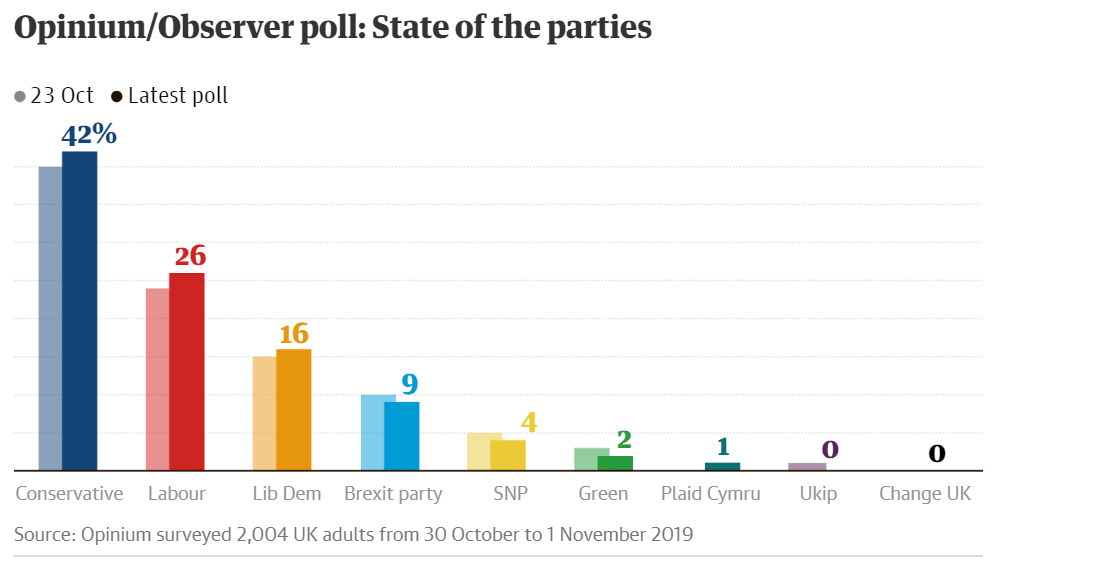
The U.S. Dollar: What to Watch

The main releases for the U.S. Dollar in the week ahead are the ISM non-manufacturing PMI survey out on Tuesday and Michigan sentiment out on Friday.
Both these metrics will provide more insight into the performance of the parts of the economy - services and the U.S. consumer - which have so far remained relatively insulated from the global slowdown in heavy industry.
The main concern is that contagion into these areas could spark a recession, so substantial weakness in the data is likely to impact negatively on the Dollar.
The ISM non-manufacturing PMI is out on Tuesday at 15.00 BST and is the more important of the two. Current market expectations are for a rise to 53.4 from 52.6. The employment sub-index is also likely to garner a lot of attention due to woeful underperformance in recent months.
In summary, a higher-than-expected reading in either the main or employment sub-index should be taken as positive or bullish for the U.S. Dollar, while a lower than expected reading should be taken as negative or bearish for the Dollar.
The Michigan consumer sentiment index is expected to show a rise to 96.0 - from 95.5 in October - when it is released on Friday at 15.00.
It is a timely indicator of consumer sentiment and can highlight broader economic trends before their time.
It has held up quite robustly during the recent downturn suggesting continued optimism amongst consumers who are the bulwark of the U.S. economy.
The trend is expected to continue with little impact on the U.S. Dollar if it continues going up. The main risk to the Dollar is that Michigan sentiment suddenly falls sharply as this might be a recession indicator.
Time to move your money? Get 3-5% more currency than your bank would offer by using the services of a specialist foreign exchange specialist. A payments provider can deliver you an exchange rate closer to the real market rate than your bank would, thereby saving you substantial quantities of currency. Find out more here.
* Advertisement

